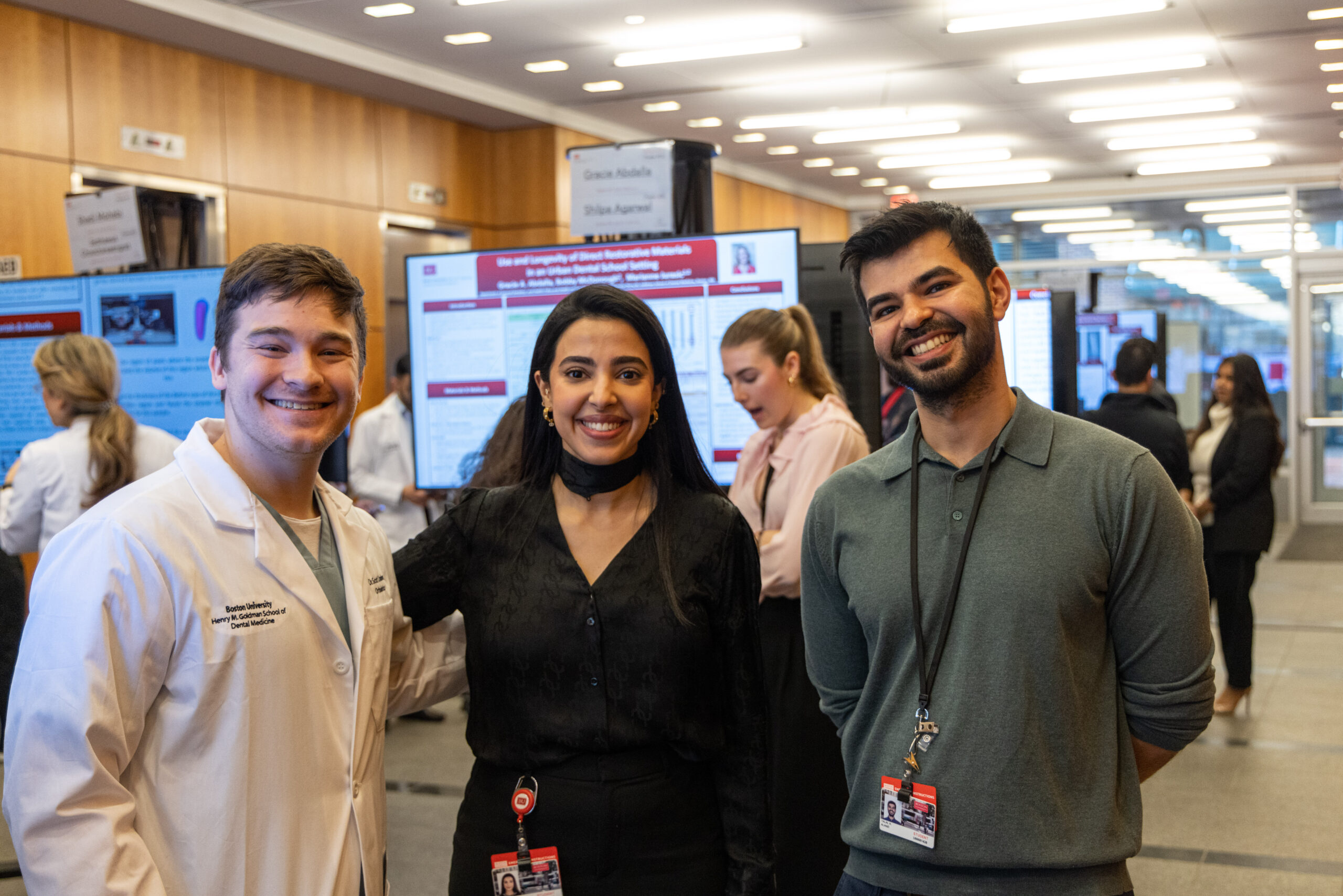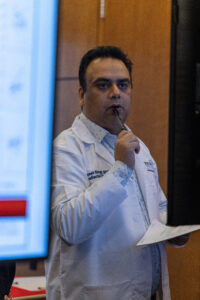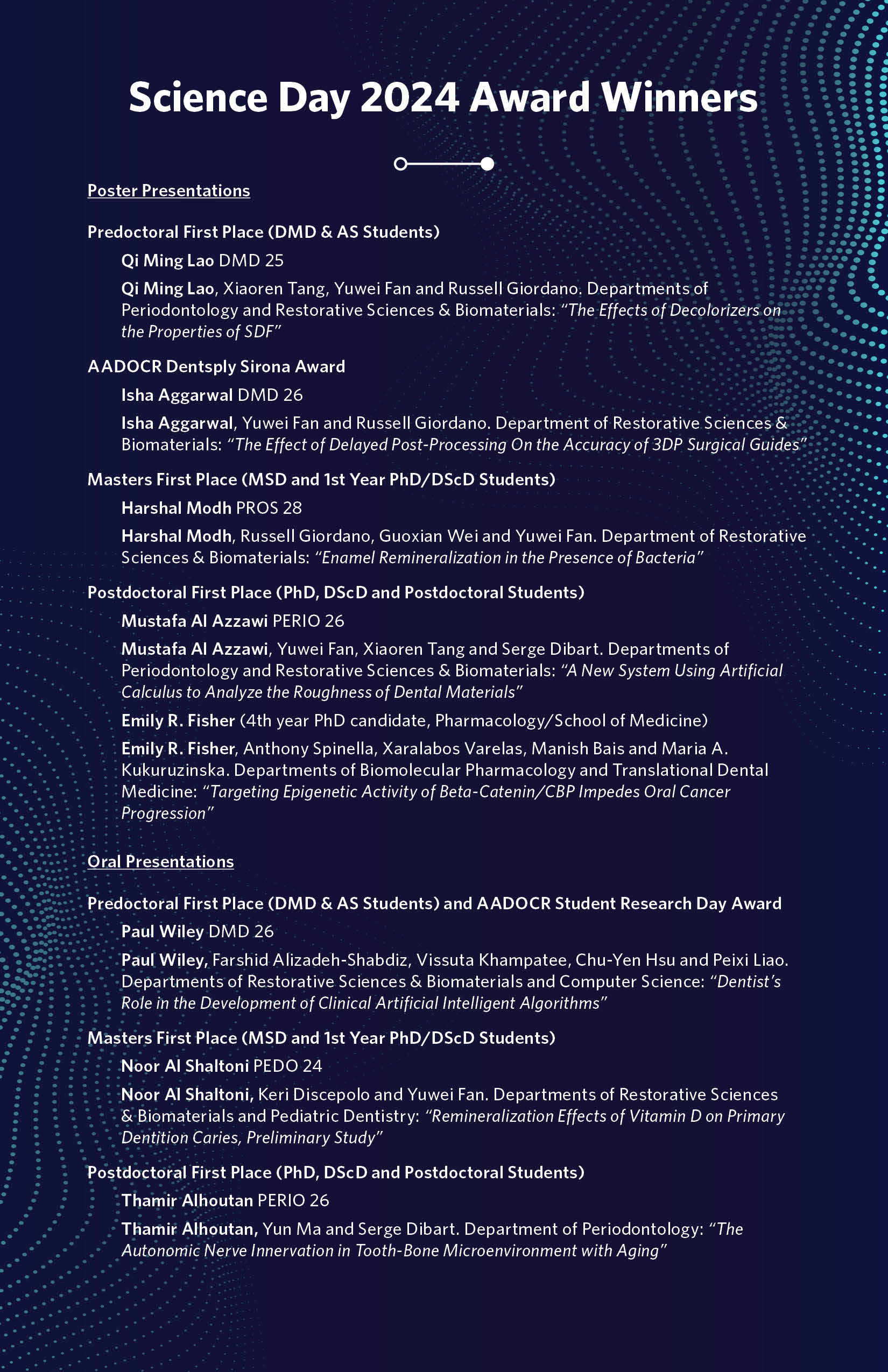Thinking Outside the Box: Science Day 2024 unveils innovative research from GSDM community

During GSDM’s annual Science Day on March 7, almost 50 students, residents, and fellows presented their latest research, highlighting and celebrating their forward-thinking experimentations and accomplishments.
Science Day allows all participants the opportunity to present their findings to the Boston University Medical Campus (BUMC) community, either delivering poster presentations in person or oral presentations shared via Zoom.
“I am confident that these studies will drive new discoveries in dental medicine with innovative clinical applications,” said Dr. Maria Kukuruzinska, associate dean for research and predoctoral research program director
The diverse research portfolio presented during this year’s Science Day emphasized the importance of basic, translational, clinical, behavioral, and public health studies and their intersection with the groundbreaking approaches of digital and artificial intelligence, Kukuruzinska said.

“We have a lot of research happening at GSDM, but it is not always as visible as our clinical and educational work,” said Kendrick Smaellie, GSDM Center for Clinical Research & Predoctoral Research program manager. “It is always very inspiring to have events like Science Day that showcase the variety and importance of the research our students and residents are doing.”
The event’s keynote presentation was delivered by Dr. Niki Moutsopoulos, senior investigator and chief of the oral immunity and infection section at the National Institute of Dental and Craniofacial Research at the National Institutes of Health. Moutsopoulos spoke about the current research on the molecular and cellular basis of oral immunity and on the implementation of a bedside-to-bench approach.
“The oral cavity is a site for first exposure, so many things will come through the mouth for the first time: food starts here, microbiota start here, [and] the air we breathe will come first from the nose and through the mouth,” Moutsopoulos said. “Many of these are the first exposures from an alien environment and how can the local immune response maintain a balance between the exposure and the response is not very well understood.”
Gracie Abdalla DMD 26 said Science Day acts as a great platform to share time-intensive research with peers.
“It took me a long time to do everything, so it’s pretty exciting that I get to show people [during Science Day],” Abdalla said of her project, “Use and Longevity of Direct Restorative Materials in an Urban Dental School Setting (2010-2019).”
Qi Ming Lao DMD 25 said Science Day is a much-welcomed occasion to learn from peer research. Lao remarked that their current experimentation stemmed from previous research with a GSDM pediatric resident on zirconia crowns. Therefore, a new research idea may be one conversation away.
“I think it’s important to come to Science Day because you get to look into new development stuff and I think that’s valuable in itself, something you wouldn’t otherwise get exposure with,” Lao said.
After presenting “Chronic Inflammation Elicited Different Responses on Mandible and Femur,” Mohammad Boushehri PERIO DscD/CAGS 2026 said it was exciting to interact with Science Day attendees.
“[Presenting an in-person presentation] is something I always wanted to do,” Boushehri said. “So, I’m really happy and it’s an interesting event. I did a virtual presentation last year, but the [in-person- interaction and the concept are totally different.”
“I think [Science Day] is encouraging for students to think beyond their regular clinical work [and] think outside of the box,” said Roxana Hashemian SPH 19 CAGS 12, GSDM clinical assistant professor of general dentistry and one of the 21 judges for this year’s event. “You need people to do [research] and I see lots of great ideas today.”
